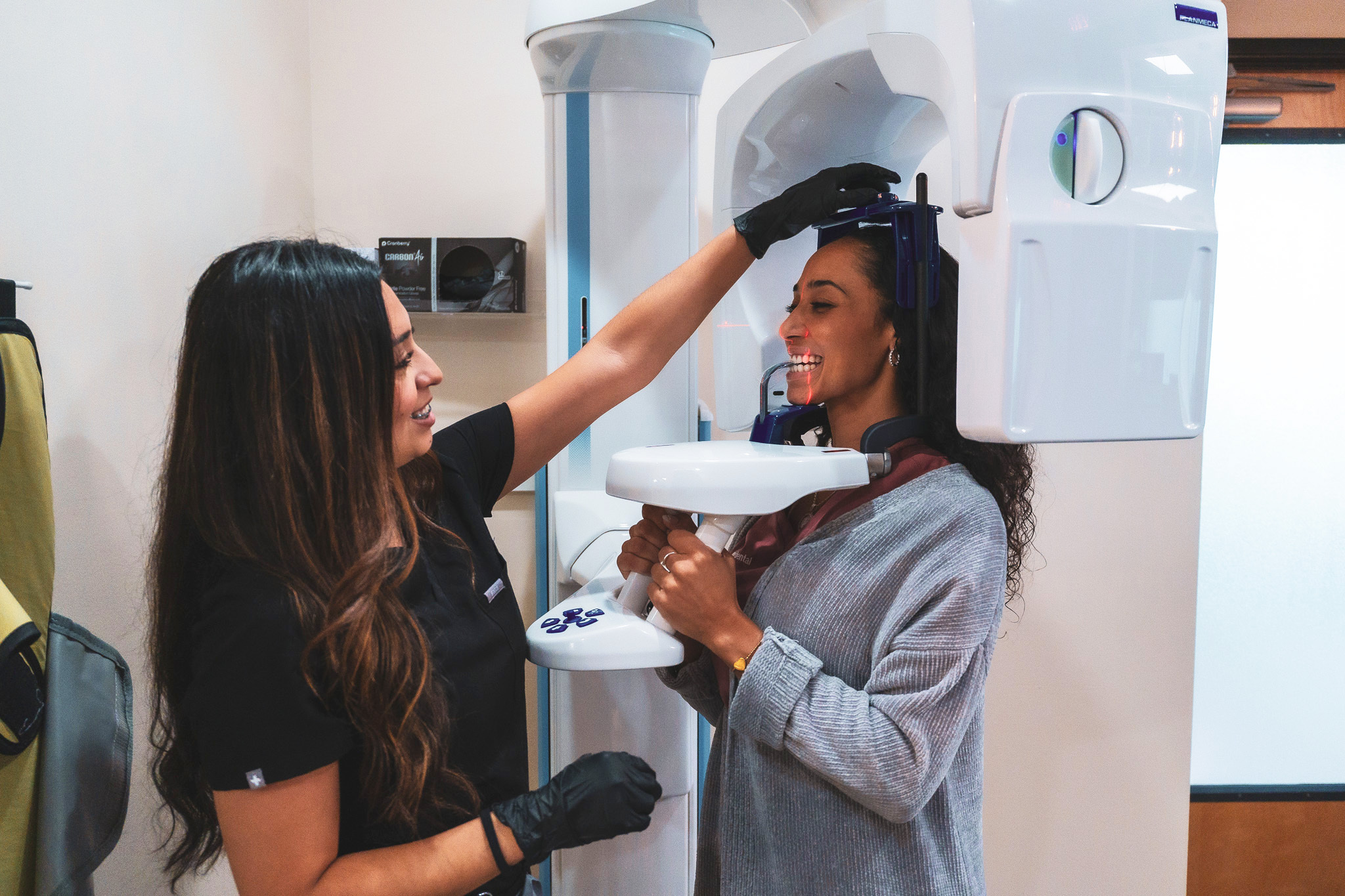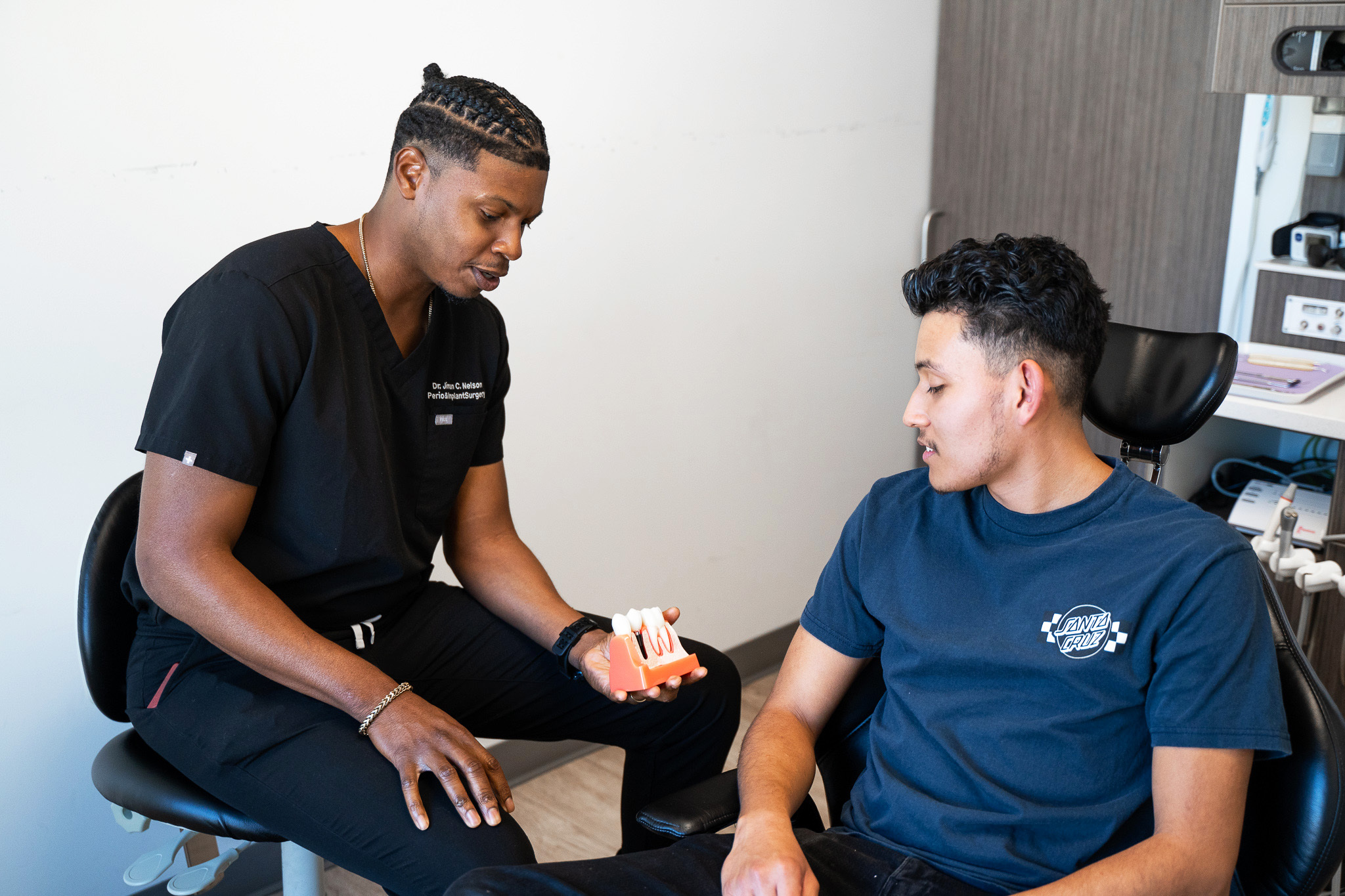Dentist Montrose Houston Tx
Houston – Montrose, Rice Village Houston
3201 Allen Pkwy Ste #E200, Houston, TX 77019
Phone: (281) 826-2953
Fax: (281) 404-7444
Monday 8AM–5PM
Tuesday 8AM–5PM
Wednesday 8AM–5PM
Thursday 8AM–5PM
Friday 8AM–5PM
Saturday 8AM–2PM
Sunday Closed
At URBN Dental in Montrose, Houston, every patient we serve receives our full attention and individualized care. Experienced and highly trained dentists and dental hygienists comprise our dental professionals team. When you come to us for your dental care, you can count on our team to explain every step of each dental procedure, answer your questions, explain treatment options for any oral health issues we find, and deliver the quality dental care you need.
![]()
Oral health issues can impact your physical health and even increase your risk of heart and respiratory diseases, along with other severe health issues. At URBN Dental in Montrose, we put you at ease, listen to your concerns, and provide comprehensive exams to ensure we identify and treat all your oral health issues.
In addition to our thorough, individualized patient care and welcoming environment, the things that set URBN Dental in Montrose apart include the following:
When looking for a “Houston dentist near me,” you can be confident you’ll receive comprehensive, quality dental care from our outstanding team.
Common reasons people see their dentist include the following:
At URBN Dental in Montrose, our dentists and dental hygienists offer extensive services, including diagnostic, preventative, cosmetic, periodontic, restorative, and emergency dental care.
Symptoms such as bad breath, sensitive teeth, bleeding gums, dry mouth, and jaw pain can indicate serious oral health issues requiring prompt treatment. Our diagnostic dental services involve assessing your oral health to identify what’s causing any oral health issues present.
Preventative dental services maintain your oral health and help prevent oral health issues from developing.
Diagnostic and preventative dental services include the following:
Our URBN Dental Montrose team also performs wisdom teeth extractions. Extracting your wisdom teeth early can ensure they’re removed before they become impacted and prevent them from causing pain by pushing against the other teeth in your mouth. Wisdom teeth extraction’s preventative functions include preventing your teeth from shifting and creating gaps or crooked teeth that need straightening. Your wisdom teeth extraction will also eliminate pain from impacted wisdom teeth and prevent other potentially severe complications, such as cysts, abscesses, tooth decay, and infections.
Many cosmetic dental services have some overlap with restorative dental care because cosmetic dentistry aims to restore the shape and health of your teeth and gums and ensure you look your best. Our gallery of before and after teeth whitening photos reveals the benefits of teeth whitening services. Whether you have misaligned teeth, stained teeth, or missing teeth, our cosmetic dentistry team can offer affordable options to restore your smile and have you looking and feeling your best.
URBN Dental in Montrose offers the following cosmetic dental services:
Periodontal (gum) disease initially affects your gums. Early-stage symptoms of gum disease include the following:
Without treatment, gum disease progresses to become a severe oral health issue, putting you at risk of losing teeth, damaging your jawbone, and damaging your gums.
Periodontic dental care services we offer include the following:
Restorative dental services encompass any services that restore your oral health. Suppose you come in for a checkup, and we discover a cavity in one of your molars. Depending on how far the cavity has progressed, we may be able to stop it from spreading with a filling. The filling performs a restorative function because it restores your tooth’s strength and prevents the infection from spreading.
Restorative dental services include the following:
Crowns and dental bridges are both restorative and cosmetic.
Restorative dental care can eliminate pain, enable your teeth to function correctly, and help prevent further oral health issues.
Reasons people need emergency dental care include the following:
At URBN Dental in Montrose, we understand dental emergencies never happen when it’s convenient. Receiving prompt treatment restores your quality of life by eliminating the pain, and preventing issues from spreading, which can become more costly and time-consuming to address.
We offer appointments with a same-day emergency dentist and have an emergency dentist on call 24 hours daily, every day of the week. You can call anytime to speak to our on-call dentist, and receive support and direction. Our dentist will explain the steps to alleviate your pain until you can come in for an appointment, or explain how to receive immediate treatment.
We also offer sleep apnea treatments to help you breathe throughout the night so you can get the rest you need for optimal health.


Are you missing one tooth or multiple teeth? At URBN Dental, we are proud to offer our patients exceptional Straumann implant services. As a premier dental practice, we understand the importance of providing high-quality dental solutions, and Straumann implants are at the forefront of implant dentistry. Our experienced team of dental professionals is trained in the latest techniques and utilizes state-of-the-art technology to ensure precise and successful implant placement. Whether you are missing a single tooth or need a full-mouth restoration, our Straumann implant services can help you achieve a beautiful, functional smile that lasts. Trust URBN Dental for top-notch implant services that prioritize your oral health and overall well-being.

Are you looking for effective sleep apnea treatment in Houston? At URBN Dental, we offer FDA-cleared Vivos appliance sleep apnea treatment to provide effective relief from this common sleep disorder. Our skilled dental professionals utilize state-of-the-art technology and personalized treatment plans to help patients achieve better sleep and overall well-being. The Vivos appliance is custom-designed to gently reposition the jaw and tongue, optimizing the airway and improving airflow during sleep. With our expertise in Vivos treatment, we prioritize patient comfort and satisfaction. Experience the transformative benefits of our FDA-cleared Vivos appliance sleep apnea treatment at URBN Dental. Schedule a consultation today for a restful night’s sleep.

URBN Dental is your trusted destination for dental veneers services that will transform your smile with stunning results. Our experienced team of dental professionals is dedicated to providing high-quality, personalized care using the latest advancements in cosmetic dentistry. With dental veneers, we can correct various imperfections such as chips, stains, and misaligned teeth, giving you a flawless, natural-looking smile. Our veneers are crafted from durable, stain-resistant materials that blend seamlessly with your existing teeth, ensuring long-lasting beauty. Whether you’re looking to enhance a single tooth or achieve a complete smile makeover, URBN Dental has the expertise and artistic touch to deliver exceptional results. Don’t wait to achieve the smile of your dreams. Schedule your free cosmetic consultation and discover how our dental veneers services can revitalize your confidence and leave you with a smile that radiates perfection.

Discover the future of dental care at URBN Dental with our FDA-Cleared Pearl Ai Dental Technology. Our practice is proud to offer this advanced digital system that revolutionizes the way we provide dental treatments. With Pearl Ai, our highly skilled dental professionals can accurately diagnose and plan treatments with incredible precision, ensuring optimal results for our patients. This cutting-edge technology utilizes artificial intelligence to analyze dental images, detect issues at their earliest stages, and provide customized treatment recommendations. From preventive care to complex procedures, Pearl Ai enhances efficiency, accuracy, and patient comfort. Experience the benefits of URBN Dental’s FDA-Cleared Pearl Ai Dental Technology and receive the highest standard of care. Schedule a consultation today and embrace the future of dentistry for a healthier, more beautiful smile.
![]()
Begin your path to a perfect smile with us at URBN Dental! We are happy to be Gold Invisalign providers, which means we are committed to providing you with high-quality care and treatments that are right for your specific needs. Do you have crooked, crowded teeth, or minor bite issues? Invisalign can help! Invisalign provides the benefits of unobtrusive, transparent aligners that are easy to wear and simple to remove. Say goodbye to metal braces, and hello to a more comfortable orthodontic treatment. Additionally, Invisalign lets you eat your favorite meals without restrictions. Schedule your FREE Invisalign consultation and talk to our dentist about your smile goals. Discover the impact that Invisalign can make in your life.
Our URBN Dental Montrose team can help you with your oral care needs today. You can rely on us to give you expert care to restore and protect your oral health. Our affordable payment plans ensure you’ll get the exceptional care you deserve and enjoy the benefits of excellent oral health and the confident smile our services deliver.
Houston | Katy | Montrose | West University Place | Greater Third Ward | Greater East End | North East Houston | Houston Heights | Central Northwest | Fairbanks | Acres Home | East Houston | Southeast Houston | Central Southwest | Fort Bend Houston | Brays Oaks | Meyerland Area | Sharpstown | Alief | Westchase | Memorial | Northwest Houston | Katyland | Whispering Lakes | Pine Lakes | Woodcreek Reserve
Our Montrose location provides extensive diagnostic, preventative, cosmetic, restorative, and emergency dental care. We also provide treatment for sleep apnea.
URBN Dental in Montrose believes every person deserves access to affordable dental services without sacrificing quality of care. We deliver superior care while offering payment options for patients without insurance.
In addition to our payment plan options, URBN Dental in Montrose accepts PPO insurance plans from most PPO insurance providers.
Preferred provider organization (PPO) is a common type of healthcare insurance offered by reputable insurance companies throughout the U.S. PPO plans offer greater flexibility than health maintenance organization (HMO) plans, which require clients to use a designated primary care provider (PCP) to manage their healthcare.
URBN Dental in Montrose offers Houston dental services Monday through Saturday during the following hours:
Locate our dentist’s office near your Montrose location using the map below.
URBN Dental in Montrose, conveniently situated at 3201 Allen Pkwy Ste #E200, Houston, TX 77019, offers exceptional dental care near Rice Village and Montrose Houston. Our prime location near Montrose Blvd., Memorial Blvd., and Waugh Dr. ensures easy accessibility for residents nearby.
No Insurance? No problem.
© Copyright 2025 | Designed & SEO Optimized by The Doctors Marketing
Disclaimer: URBN Dental uses restorative materials such as Admira Fusion® by VOCO, which are free of BPA and Bis-GMA, and are not known to degrade into microplastics under normal oral conditions. While marketed as biocompatible and free of traditional plastic monomers, no dental material is guaranteed to be completely risk-free for all patients. This information is provided for educational purposes and does not constitute medical or regulatory advice.

Discover your perfect smile with a FREE Invisalign assessment.

Receive a complimentary 3D scan ($300 value) when you proceed with implant care.

Speak with our experts about your smile goals from the comfort of your home.
Discuss your smile goals with our experts—choose an in-office visit or a convenient 15-minute phone consult.

Quick, affordable care when you need it most.

Have questions about implants? Get personalized guidance in a brief phone call.